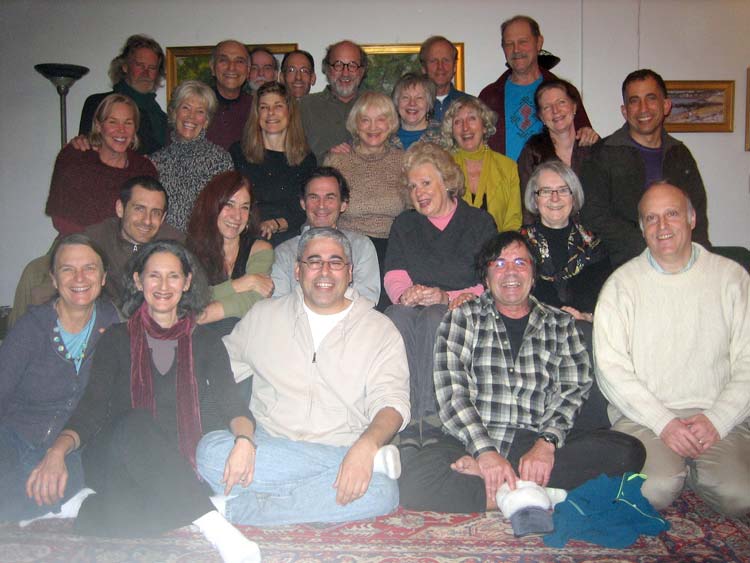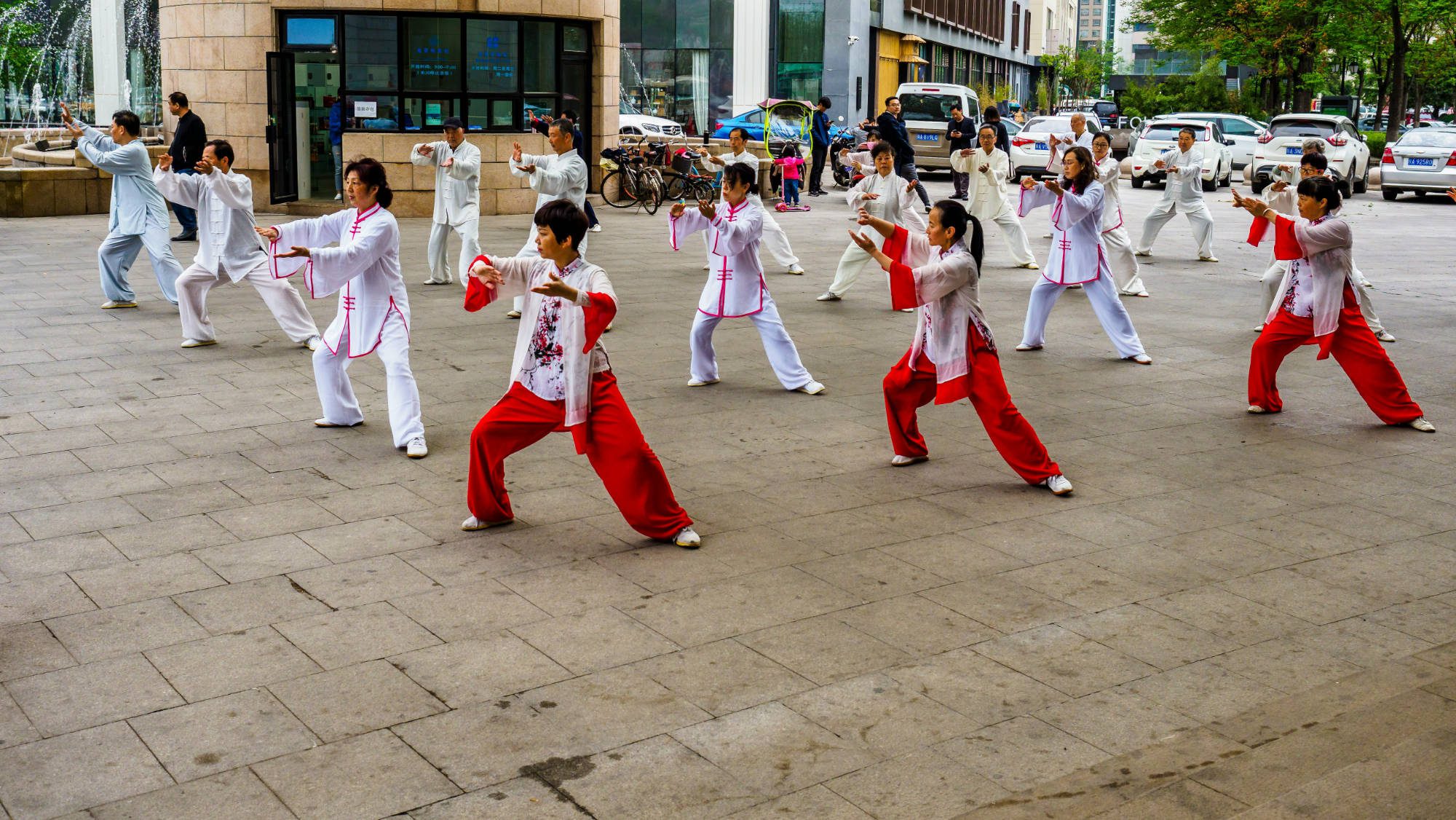It’s been a while since I’ve written a post—I hope the holidays went well for everyone, and happy new year. And a big welcome to those of you who are new to the Transformational Acupuncture blog.
I had the wonderful opportunity to attend a weeklong spiritual retreat in the second week of December, led by my teacher Rupert Spira. Located in Westchester County about 45 minutes north of New York City, the retreat took place at a small retreat center called Bailey Farms. The days consisted of guided meditation, silent meditation, talks, and dialogues/question–answers. It was an amazing retreat experience, which is still strongly echoing through my daily life, allowing me to access greater peace.

Reflecting on what made the retreat special, 4 components come to mind:
- Taking time away from the usual day-to-day life
- Turning inward, to reflect on one’s innermost experience
- The presence of a teacher
- The community of fellow retreat participants
Winter—a time for retreat
Winter in Chinese medicine is a time for hibernation, quiet, stillness, and silence. This is the way the energy is moving in nature at these times. In nature, the energy and physiological activity of plants retract to the core and roots, and animals reduce their activity levels.
In humans, winter manifests in the way many of us will just feel more tired, wanting extra sleep. Or in more pronounced cases, some of us will experience a marked period of depression, low energy, and withdrawal (labeled seasonal affective disorder by modern medicine).
Looking at it from a positive perspective, the energy of winter calls us and draws us into silence and stillness. Within these moments of silence, our inner life has the opportunity to settle, to experience the peace of being in touch with our inner space. So often for many of us, we do not take the time to do this.
This is not surprising, as there is almost no encouragement in our culture to do so! With the dominant cultural focus being on external action, communication and accomplishment, we never learn the skill, the way, of how to settle into ourselves, how to engage with our naturally peaceful inner space.
The essence of what is being called for in the winter’s energy is withdrawal, retreat, and inward dwelling. The folks at the Zen Mountain Monastery, where I did a one-month retreat in 2008, call winter a time for “healthy solitude and self-reliance.” This solitude can be found in many ways, and in many settings.
“Retreat” is simply the act of taking the time to do this.
What type of retreat is right for you?
I went to a formal retreat setting, with a teacher and fellow students, organized around a spiritual tradition (in this case it was Advaita, a philosophical/spiritual system from India, which has many similarities to Buddhism), but retreat can happen in a multitude of ways. It depends on your religious and spiritual tradition, your personality, schedule, life circumstances, and so on. In almost every case, however, I would say that it is possible, and advisable, to take time for retreat…
Many people resist taking retreat based on a cost-benefit analysis of their time—there’s just not enough available time to justify it. However, the results of retreat include greater creativity, focus, calm, stress reduction, energy, peace, and ability to experience love in your relationships. Taking retreat increases the possibility that these qualities will become entrenched in your daily life, thus increasing the quality of life through the whole spectrum of your life activities. The real question is whether we can afford not to take retreat, a question that our 2-week-vacation-per-year culture has obviously answered in the negative, but with what consequences?
Guidance through the retreat process
Taking retreat is actually a time-honored tradition in most cultures. It is built into the Sabbath day off in Judaism, and for centuries, monasteries and ashrams in many cultures have been havens for people to not only find a safe and secluded place for retreat, but also to gain guidance in how to navigate the retreat process.
This issue of guidance through the retreat process is an important one to consider. Many times people are consciously or unconsciously scared of silence, stillness, and spending time with their inner space. Why? Because there’s often a lot of “crap” floating around in there, just waiting to be noticed.
A lot of our lives is actually geared toward distracting and diverting our attention from this inner space, so that we don’t have to deal with the “crap.” I can assure you from my experience, that while it is certainly freaky, scary and often disorienting and disconcerting to go inward, the results are worth it. In fact, the retreat process of going inward is actually the only way to discover lasting peace and contentment (ie, finally letting go of the crap!).
This is where finding the right guidance becomes important. Most of us are not taught the map of our inner emotional, mental and spiritual terrain, much less the skills of how to successfully navigate it.
That’s what spiritual, religious, and personal growth teachers are for! Well, ideally, anyway. Since there are all kinds of people out there, it is important to discern which teacher will be appropriate for you. Ideally, a teacher will be able to accurately, gently, and skillfully guide you through the retreat process. Of course, no one is perfect, but the hallmarks that you should be looking for include feeling safe with the person, the concepts being taught, and the retreat setting itself.
And, although guidance is very helpful, some people will want to go through the process alone—perfectly fine if it’s right for you.
So, time to get started!
Considerations
In considering what kind of retreat would be right for you, consider the following ideas:
- For those who have not done retreat before, I recommend starting with half a day, or 4 hours.
- Other common lengths of time are 1 day, 2 days, and 1 week. Each length of time affords you different possibilities in terms of the depth of experience that you will experience – the more days, the greater the depth and intensity.
- Do you want to be alone, or with others?
- Do you want a structured schedule, or free time?
- Do you want guidance from a teacher and the company of fellow students?
- Do you want to engage in a specific religious, spiritual, or personal growth retreat, or do your own thing?
- Do you want to be in the city or countryside?
- Do you want just silent meditation, or a mix of silence, talking and conversation?
A retreat can be as simple as arranging time for the family to be taken care of, packing a lunch, and heading into the hills for a 4-hour hike. It could be as short as taking 2 hours to journal and reflect at your favorite coffee shop. A 1-hour acupuncture session or massage is actually a mini-retreat. It could also be as involved as flying to Costa Rica for a weeklong yoga and meditation retreat. Or, for those who want to go really big, drop everything and take a 3-year Tibetan Buddhist retreat in the Himalayas.
Your first retreat
That being said, many people often find it helpful to start with a half-day, organized meditation retreat. The Insight Meditation Community of Washington, focusing on Buddhist-based mindfulness meditation, offers frequent half-day retreats, and is a good place to start. If you are connected to a church, synagogue, or other religious community, many offer periodic day and weekend long retreats—a good place to start as well.
Or, like I did last summer over 4-5 days at Holy Cross Abbey in Berryville, VA, you can take your own retreat at any number of local retreat centers and monasteries. These places offer an atmosphere of peace and stillness, and often don’t care what religion or spiritual path you are practicing—they’re just interested in providing a place for retreat and inward dwelling.
For example, Holy Cross Abbey was very welcoming when I told them I wanted to just have a room to study and practice my Buddhist-oriented path. It was a beautiful place to visit, get away, study, meditate and walk around the grounds and property.
I hope I’ve inspired you to consider taking some time for spiritual retreat. Feel free to ask me any questions—just type in the comments section below, and I’ll respond to you shortly. Enjoy!







